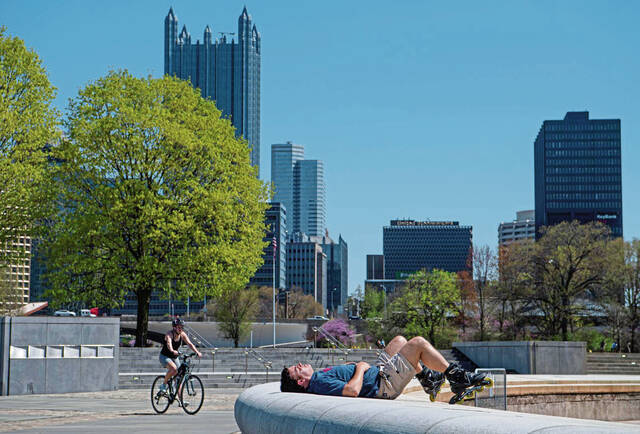Editorial: Breaking windows, lighting alleys and building better communities
In the classic movie “It’s a Wonderful Life,” Indiana native Jimmy Stewart throws stones at an abandoned house. Break a window and make a wish. Donna Reed’s character initially tries to stop him but gives in to the idea.
That’s broken-window theory in a nutshell. Once windows start being broken, it is easier for other people to pick up a rock. And hey, if the windows are broken, what’s a little graffiti? And, once it’s that trashed, why not move on to the building next door?
It’s an idea that is pushed for crime prevention and battling blight. It is the idea behind things such as cops walking a beat or controversial stop-and-frisk policies. Studies say that, regardless of crime statistics, it is why people believe one neighborhood is safer than another. The broken windows make an impression.
A new study by Point Park University points to a similar idea that might be called illuminated-alley theory.
Initiated by the nonprofit Pittsburgh Downtown Neighbors Alliance, the study looked at the potential impact of “reimagining” the city’s alleyways. These access links historically are synonymous with darkness, filth and danger. They stink. They are home to rats and stray dogs. Crimes from drug deals to theft to assault happen there.
But the study considers how reforming alleys could snowball positive change the same way breaking windows spreads negatives.
Better lighting combats dark corners where criminal activity can take place, and cameras can provide accountability. More trash and recycling containers can prevent accumulation of garbage. Increasing the number of public restrooms can keep people from using alleys as toilets. Murals can bring art and color, making alleys a feature rather than a detriment.
One caution, however, is commitment.
“We can’t fix an alley with something that temporarily looks good and then goes back to the way it was as soon as the funding runs out,” said John Valentine, executive director of the Pittsburgh Downtown Neighbors Alliance.
With thought and preparation, this could be more than cosmetic improvement. It could mean bettering safety, economy, efficiency and health. At a time when people and businesses are concerned about crime, violence and homelessness in Pittsburgh, it is worth considering ideas that come at problems from unexpected directions.
Remove the ads from your TribLIVE reading experience but still support the journalists who create the content with TribLIVE Ad-Free.

